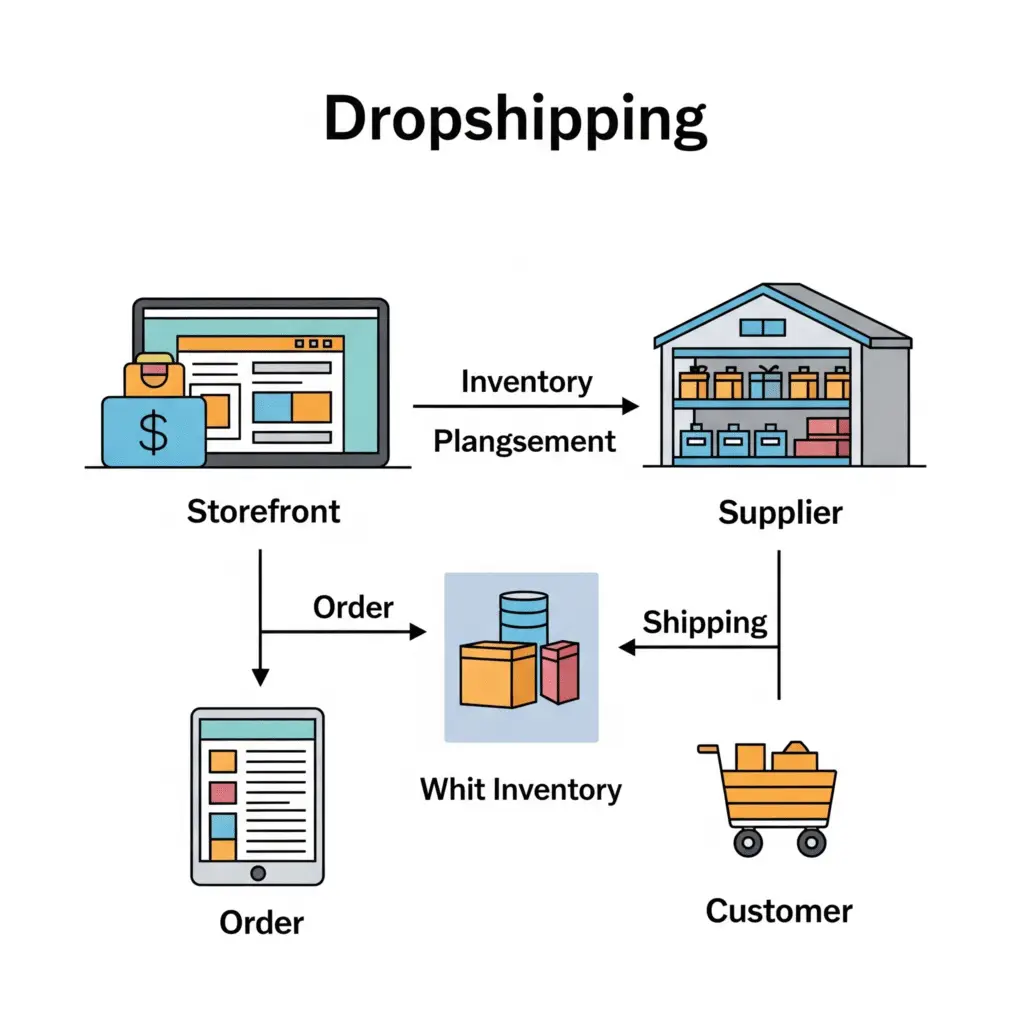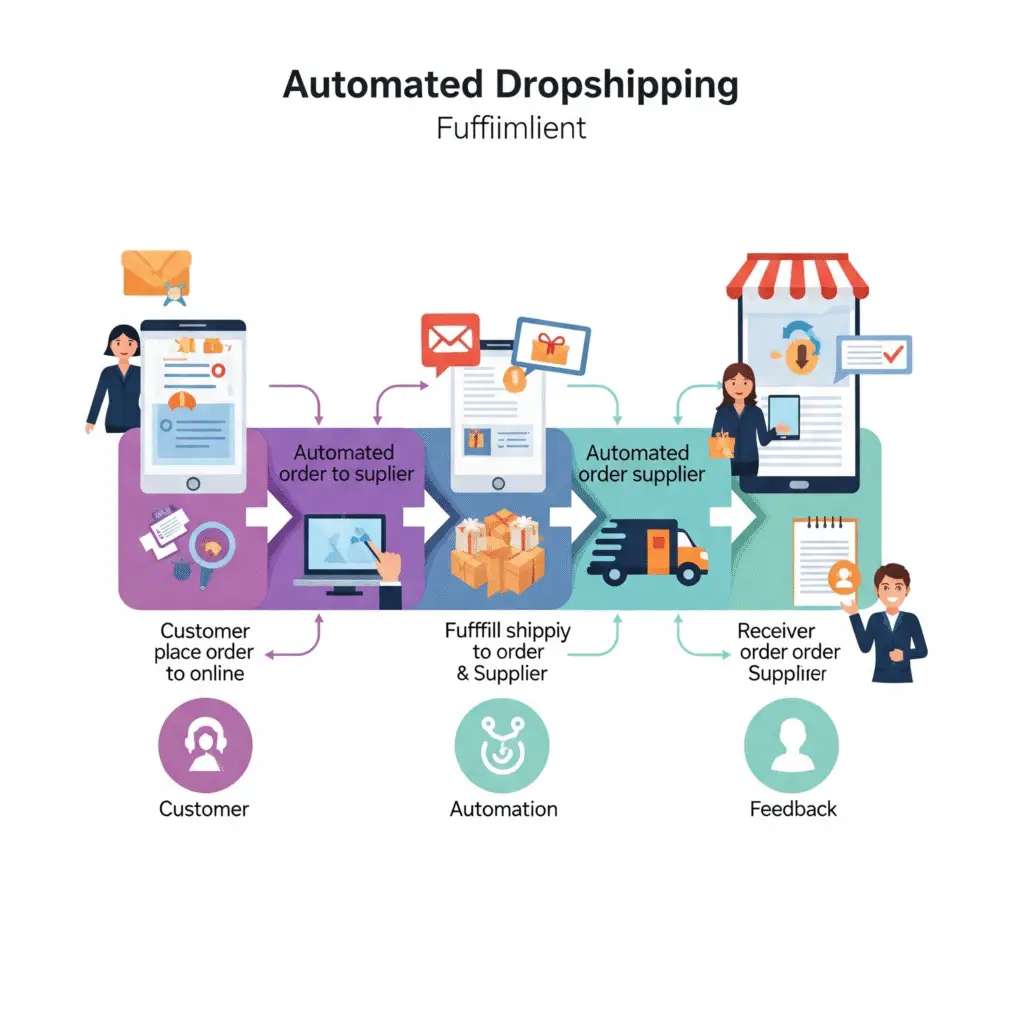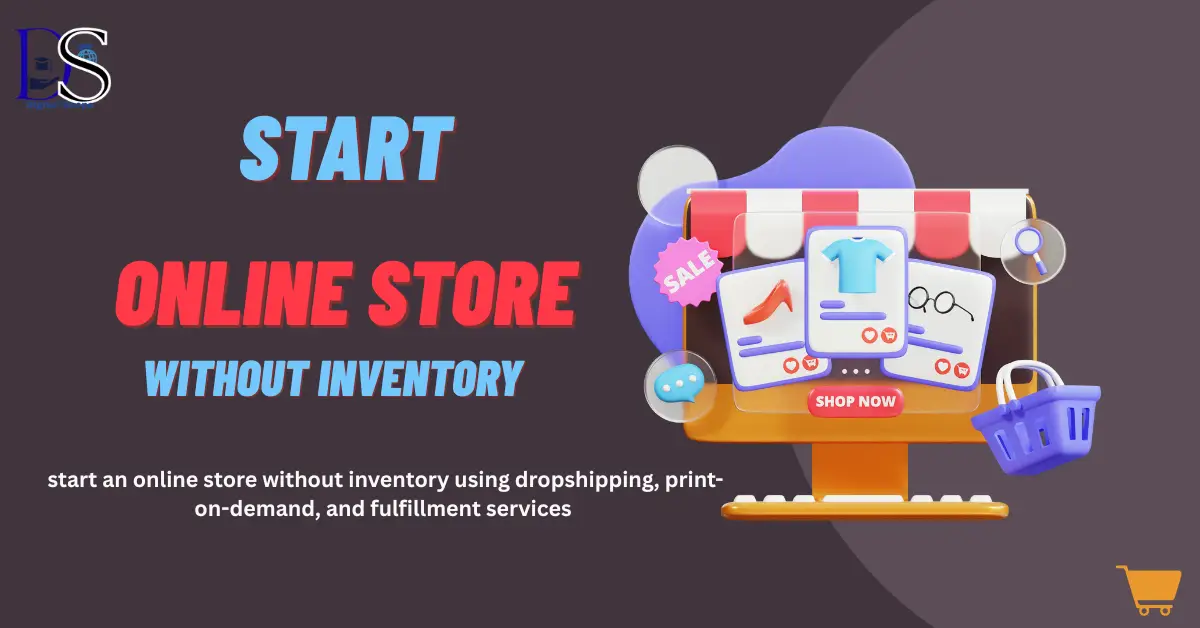How to Start an Online Store Without Inventory
A Step-by-Step Guide for Beginners
Introduction
You can Earn Money Online by selling other products. You can start an online store without holding any inventory, and still build a profitable business. Whether you’re a student, a parent, or an aspiring entrepreneur, this guide will walk you through everything you need to know—from choosing the right business model to setting up your store and scaling it over time.
In This Article
Drop shipping Business Model: The Easiest Way to Sell Without Inventory
If you’re looking for the most accessible method to launch an online store, dropshipping is the go-to solution. In this model, you act as the storefront while your supplier handles the inventory, packaging, and shipping.
When a customer makes a purchase:
You keep the profit margin.
You forward the order to your supplier.
The supplier ships the product directly to the customer.

Benefits of dropshipping:
- No warehouse needed
- Low startup cost
- Wide range of product options
Recommended platforms:
AliExpress, Spocket, CJ Dropshipping
Print on Demand: Sell Custom Products Without Handling Stock
Print on Demand (POD) is ideal for creative entrepreneurs who want to sell unique, custom-designed items. You create the design, and the POD company handles everything else.
Products commonly sold using POD include:
- T-shirts and hoodies
- Coffee mugs and water bottles
- Posters and phone cases
- Tote bags and home decor
Leading POD platforms like Printful and Printify integrate with Shopify, Etsy, and WooCommerce, automating your store’s entire fulfillment process.
Niche Selection: How to Choose a Profitable Market Without Inventory
A niche gives your store focus. Instead of selling to everyone, you attract a specific group with shared interests or needs. This boosts conversion rates and lowers ad costs.
Best niches for no-inventory stores:
- Pet accessories (e.g., custom collars or pet portraits)
- Eco-friendly household items
- Fitness gear for women over 40
- Mental health and self-care products
- Remote worker lifestyle accessories
Use free tools like Google Trends or Ubersuggest to check demand and competition.
ECommerce Platforms: Best Tools for Starting a Store Without Inventory
Your platform is your online storefront. Choosing the right one ensures ease of use, customization, and smooth integrations with fulfillment services.
Top platforms to consider:
Etsy – A ready-made marketplace with built-in traffic
Shopify – Easy to use, feature-rich, ideal for beginners
WooCommerce – Best for WordPress users
BigCommerce – Great for scaling stores

Most of these platforms offer integrations with both dropshipping and POD providers, automating your backend operations.
Supplier Integration: Automating Order Fulfillment Without Inventory
Once you’ve selected your eCommerce platform, it’s time to connect with your supplier. These integrations allow you to process orders automatically.
Popular integration tools:
- Printful + Shopify – One-click integration for POD automation
- Spocket + WooCommerce – Direct dropshipping from U.S. and EU
- Amazon FBA – For hands-free fulfillment through Amazon
Always test your setup with sample orders to verify quality, branding, and shipping timelines.
Product Listings: Optimize Titles and Descriptions with Semantic SEO
Great product listings do two things well: they persuade customers to buy, and they help your products get discovered in search engines.
Tips for writing strong listings:
- Use clear, benefit-driven titles
- Include semantic keywords like “no inventory eCommerce,” “dropshipping t-shirt store,” or “print on demand home decor”
- Use bullet points to highlight features
- Add high-quality images and lifestyle mockups
Example:
“Relax in style with our soft cotton ‘Weekend Mode’ hoodie—printed just for you and delivered to your door.”
Marketing Tactics: How to Drive Traffic to Your Online Store
No matter how great your product is, people won’t find it unless you promote it. Marketing is essential, especially when starting from zero.
Social Media Advertising
Platforms like Facebook, Instagram, and TikTok are perfect for visual products.
Create short, engaging videos and use targeted ads to reach potential buyers.
Organic Marketing
Post regularly on Pinterest, Reels, or YouTube Shorts to build a following. Use niche-specific hashtags to gain traction.
Email Marketing
Use tools like Mailchimp or Privy to build and nurture an email list.
Offer:
- Welcome discounts
- Abandoned cart emails
- Product launch announcements
Influencer Outreach
Send free products to micro-influencers in your niche. Their audience trusts them—and can bring you targeted traffic.
Order Fulfillment: How Automation Makes Inventory-Free Selling Possible
After integration, your orders are processed automatically:
- Your store receives the payment
- The supplier prints or ships the item
- Tracking information is sent to the customer
You don’t have to lift a finger.

Automation tools:
Shopify Flow, Zapier, Oberlo
This process saves time and ensures a smooth customer experience.
Customer Service and Brand Building: How to Stand Out Without Holding Stock
While your supplier handles logistics, you own the relationship with your customer.
Best practices:
- Reply to inquiries within 24 hours
- Offer clear policies on shipping, returns, and refunds
- Display trust signals like reviews, testimonials, and secure payment badges
- Collect feedback and improve based on it
A strong reputation builds loyalty—and brings repeat business.
How to Scale Your Online Store Without Inventory
Once you find winning products and messaging, here’s how to scale:
- Add more items within your niche
- Expand to other platforms like Amazon, eBay, or Etsy
- Launch upsells or bundles
- Consider creating a brand (e.g., custom labels or packaging)
Tools like Lifetimely or Glew.io can help track customer behavior and lifetime value.
Case Study: How Alex Made $5K in 90 Days Without Inventory
Alex, a college student, had a passion for internet memes. He used Canva to create t-shirt designs and connected his Shopify store to Printful.
He posted TikTok videos wearing his shirts. One video went viral. Within three months, Alex had sold over $5,000 worth of merchandise—without handling a single package.
Conclusion
Starting an online store without inventory is not a pipe dream—it’s a proven business model that thousands are using to generate income online.
You don’t need technical skills or a huge budget. Just a good idea, a reliable supplier, and the willingness to take that first step.
Now is the time to turn your idea into income—one click, one product, one customer at a time.
FAQs: How to Start an Online Store Without Inventory
1. Is starting a store without inventory really profitable?
Yes, many sellers earn thousands per month using dropshipping or POD. Focus on niche markets and quality branding.
2. Do I need a business license to sell online?
Not to start, but it’s wise to check your local laws if you plan to grow or scale.
3. Which platform is easiest for beginners?
Shopify is the most user-friendly and integrates easily with Printful or Spocket.
4. How much money do I need to start?
You can begin with as little as $50–$100 using free design tools, free Shopify trials, and low-cost ad tests.
5. How do I handle returns or refunds?
Suppliers have their own return policies. Ensure your policy aligns with theirs, and offer great support to keep customers happy.








One Comment